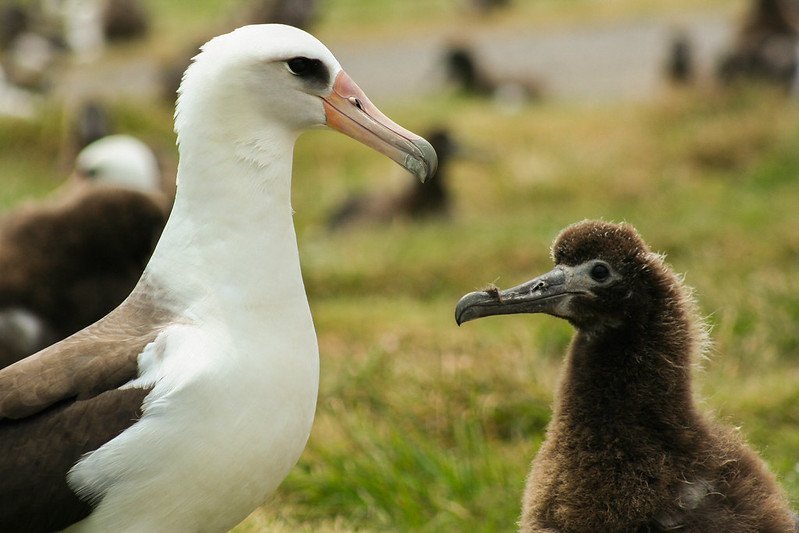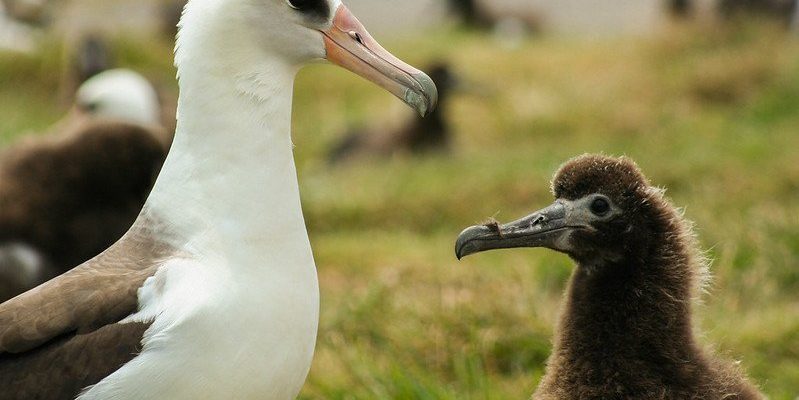
You might be wondering if an albatross can really be harmful at all. After all, they’re mostly known for their long flights across the ocean, not for attacking humans. While they’re not likely to come after you like a wild animal, there are specific scenarios that can lead to unexpected interactions. In this blog, we’ll explore what makes these birds unique, their behaviors, and the rare occasions when they could be dangerous.
Understanding the Albatross
The albatross belongs to a family of large seabirds known for their incredible flying abilities. These birds are experts at riding the wind currents, allowing them to travel thousands of miles without too much effort. Think of them as the marathon runners of the sky, almost effortlessly gliding over vast ocean waters.
Albatrosses are primarily found in the Southern Ocean and the North Pacific, where they often roam over the water, searching for food. Their diet mainly consists of fish, squid, and even some carrion. What’s fascinating is that these birds can dive deep into the sea to catch their prey, using their wings to propel them through the water. This adaptability gives them a unique edge in their environment.
The most well-known species, the wandering albatross, is especially impressive. With wingspans that can reach up to 12 feet, it’s no wonder they captivate bird-watchers and nature lovers alike. But despite their size and grace, many people don’t realize that they are not completely harmless.
Interactions with Humans
So, can albatrosses actually be dangerous to humans? The short answer is, it depends on the situation. Most of the time, albatrosses are more concerned about finding food than interacting with people. However, they can become aggressive if they feel threatened or if their nesting grounds are disturbed.
When they are on land, especially during breeding season, albatrosses can be protective. If someone inadvertently gets too close to their nests, a parent bird might defend its territory by swooping down. This behavior can be surprising—after all, it’s easy to forget that they can be just as protective as any land animal. It’s best to observe them from a distance to avoid provoking them.
Why Are Albatrosses Protective?
The protective nature of albatrosses stems from their instinct to safeguard their young. Like many birds, they go to great lengths to ensure the safety of their chicks, which are vulnerable during their early months. When you approach a nest, the albatross may see you as a threat, leading to defensive behavior.
This protective instinct is important for their survival as a species. Since albatrosses often raise just one chick at a time, ensuring that it survives is a top priority. You might compare this to a parent lion fiercely guarding its cubs. The motivation is similar: protect the next generation.
Accidents and Unintentional Danger
While direct attacks are rare, accidents can happen. For instance, sailors or fishermen may inadvertently get too close to nesting albatrosses while at sea. If a bird feels cornered, it could flail its wings or even knock someone over while trying to escape.
Another common scenario arises from fishing activities. Albatrosses are attracted to boats, especially when there’s a chance of food. Fishermen sometimes unintentionally harm these birds with their lines or hooks. This isn’t because the albatross is dangerous, but rather because the interactions can turn hazardous when humans unintentionally harm them.
Environmental Concerns and Their Impact
It’s essential to consider that the declining albatross populations are impacted by human activity, such as overfishing and pollution. As their food sources diminish, these birds are forced to venture closer to human habitats in search of sustenance.
This encroachment can lead to more interactions between albatrosses and people, increasing the potential for misunderstandings. As their natural habitats shrink due to environmental changes, we may inadvertently put ourselves at risk while hoping to catch a glimpse of these incredible birds.
How to Safely Observe Albatrosses
If you’re lucky enough to spot an albatross in the wild, it’s essential to do so with care. Here’s how to ensure a safe and respectful experience:
- Keep your distance: Use binoculars or a zoom lens to observe them from afar.
- Respect nesting areas: Be aware of signs and guidelines that indicate protected zones.
- Stay calm: If an albatross displays aggressive behavior, back away slowly and avoid sudden movements.
Taking these precautions can ensure that your encounter is memorable and safe, allowing you to appreciate their beauty without causing stress to the birds.
In conclusion, while albatrosses aren’t typically dangerous to humans, certain circumstances can lead to unexpected interactions. Understanding their behavior helps us appreciate these stunning birds without getting too close for comfort. By respecting their space and protecting their habitats, we can ensure that future generations can admire the albatross in its natural glory. Remember, it’s all about coexistence—enjoying these magnificent creatures while allowing them to thrive in their environment.

